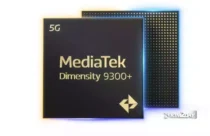Intel unveils second-gen Bonanza Mine chip with increased efficiency


New details have emerged about a new mining chip from Intel Corporation that will be used with a 3,600-watt miner to improve Bitcoin (BTC) mining efficiency.
The IEEE International Solid-State Circuits Meeting (ISSCC) 2022, a conference dedicated to the electronics and chip manufacturing industries, is where Intel unveiled its second-generation BTC mining rig.
Bonanza Mine (BMZ2) is a Bitcoin mining ASIC that can deliver 40 terahashes per second (TH/s), according to the company.
As of November 2018, Intel’s “high-performance Bitcoin Mining” patent had promised to lower overall power consumption by 15%. Confidence in competing with established competitors such as Bitmain, MicroBT, and Nvidia was shown by Intel representatives at the time.
With around 300 chips and a 3,600W miner, the BMZ2 chips are intended to deliver up to 40 TH/s in a well-balanced environment, comparable to the BMZ1’s architecture.

The next-generation BTC miner from Intel will have a low energy usage of 56.97 joules per terahash (J/TH) and be able to produce a balanced performance of 40.4 TH/s while consuming 2,293W. The Antminer S19j ASIC Bitcoin miner consumes 3,100W to deliver up to 90 TH/s at room temperature, resulting in an efficiency of 34.5 J/TH when compared to Bitmain’s hardware.
Hardware will also be able to work in high-performance and power-saving modes to maximize the energy-cost ratio across a range of mining efficiency levels.
Intel has not yet announced a launch date or the specific technological specifications for their upcoming second-generation mining rig.
The increasing difficulty of mining Bitcoin on the network is a clear indication of the network’s increasing resilience to denial-of-service attacks.
February 13 saw a peak hash rate of 248.11 exahashes per second for Bitcoin, a boost of 31.69 percent from the previous day’s rate of 188.0 exahashes.
It’s imperative that BTC mining equipment evolve to keep up with the increasing hash rate while spending the same amount of energy.















